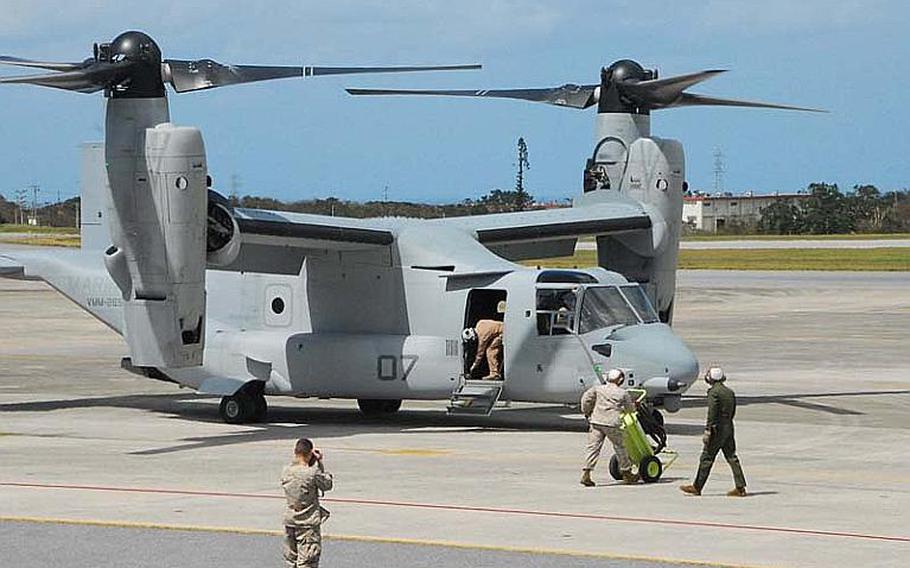Asia-Pacific
The Osprey has landed on Okinawa
Stars and Stripes October 1, 2012

A Marine Corps MV-22 Osprey sits on the tarmac at Futenma air station after arriving late morning Oct. 1, 2012, from Iwakuni. The U.S. military has deployed the controversial aircraft to Okinawa despite fierce opposition by local Japanese. (Travis Tritten/Stars and Stripes)
CAMP FOSTER, Okinawa — U.S. Osprey aircraft arrived on Okinawa on Monday as Japanese police held back angry protesters who gathered for a fifth day of demonstrations around the Futenma air station.
Six of the helicopter-plane hybrids touched down at the Marine Corps base just before noon, the beginning of a permanent deployment that has roiled anti-U.S. military sentiment here.
Hundreds of protesters — fearful of the aircraft’s safety record — descended on one of Futenma’s secondary gates during the deployment, but dozens of police officers kept the base entrance open and prevented the crowd from approaching a Marine Corps security checkpoint.
“Why can’t our voices reach the Japanese government and U.S. military?” said Keiko Itokazu, a member of Japan’s parliament, who spoke to the crowd staging the sit-in Monday. Itokazu said she was “filled with rage” over the Osprey deployment, which Okinawa has opposed for the past year because many believe the aircraft is unsafe following recent accidents. In addition to public protests, she said the prefectural assembly and all 41 municipal governments in the prefecture have signed protest resolutions.
The Marine Corps plans to deploy two squadrons of the tilt-rotor aircraft to Futenma to replace its aging fleet of dual-rotor Sea Knight helicopters, which were first put into service during the Vietnam War.
The U.S. military has said it is counting on the Osprey — which can fly farther and faster than the Sea Knight — to maintain security in an increasingly tense Asia-Pacific region.
But many in Japan point to a fatal crash in Africa in April and a June crash in Florida that injured crew members and destroyed a $78 million aircraft as proof that the Osprey is unsafe.
The U.S. and Japan conducted independent investigations into the causes of the accidents and found that pilot errors, not mechanical malfunctions, were to blame.
Still, opposition to the Osprey deployment has remained strong on Okinawa, where residents have balked for generations at the large U.S. military presence — particularly the air traffic at Futenma in the heart of densely populated Ginowan city.
In September, tens of thousands gathered in Ginowan for a mass protest against the Osprey. Similar smaller protests have been held around the island since June.